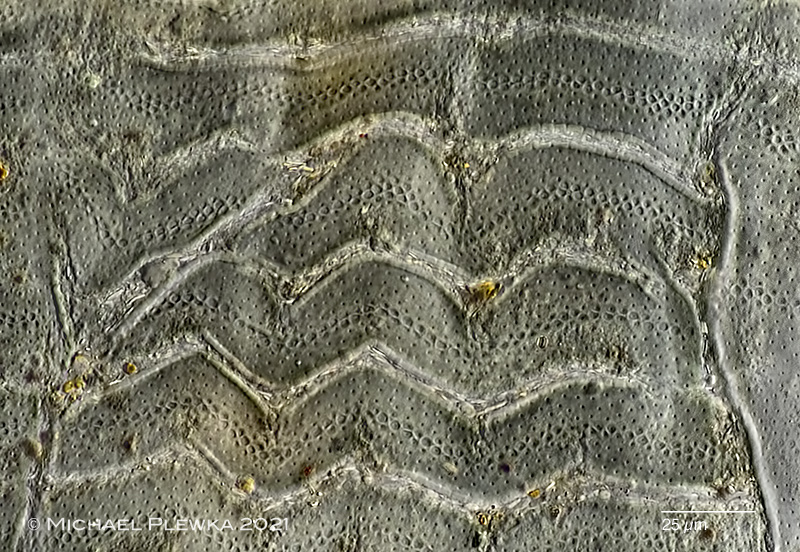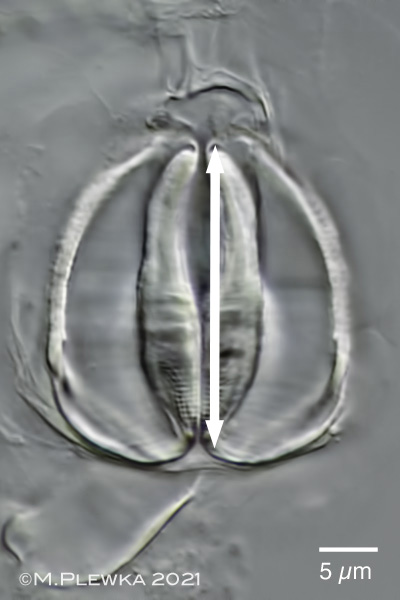|
|
| Rotaria neptunoida Harring, 1913 |
|
| Rotaria neptunoida, creeping; in contrast to Rotaria tardigrada the ventral toes (marked by arrowheads) are shorter than the spurs (S). The dorsal toe is marked by arrow. (6) |
| |
 |
| Rotaria neptunoida, integument of the same specimen. This integument has a central row of large pores and small pores accompanying this row between each longitudinal fold, which is in contrast to the structure of the integument of R. tardigrada. (6) |
| |
  |
| Rotaria neptunoida, ramate trophi of specimen from (6). Left: cephalic view; right: caudal view. Rami length (RaL; double arrow): ≈24µm. The ramus length of Rotaria neptunoida is smaller (22.4 ± 0.3 µm) than the ramus length of Rotaria tardigrada (33.1± 0.6µm) (according to Fontaneto (2004)) |
| |
| |
| |
|
|
| |
| |
| |
|
|
|
|
|
|